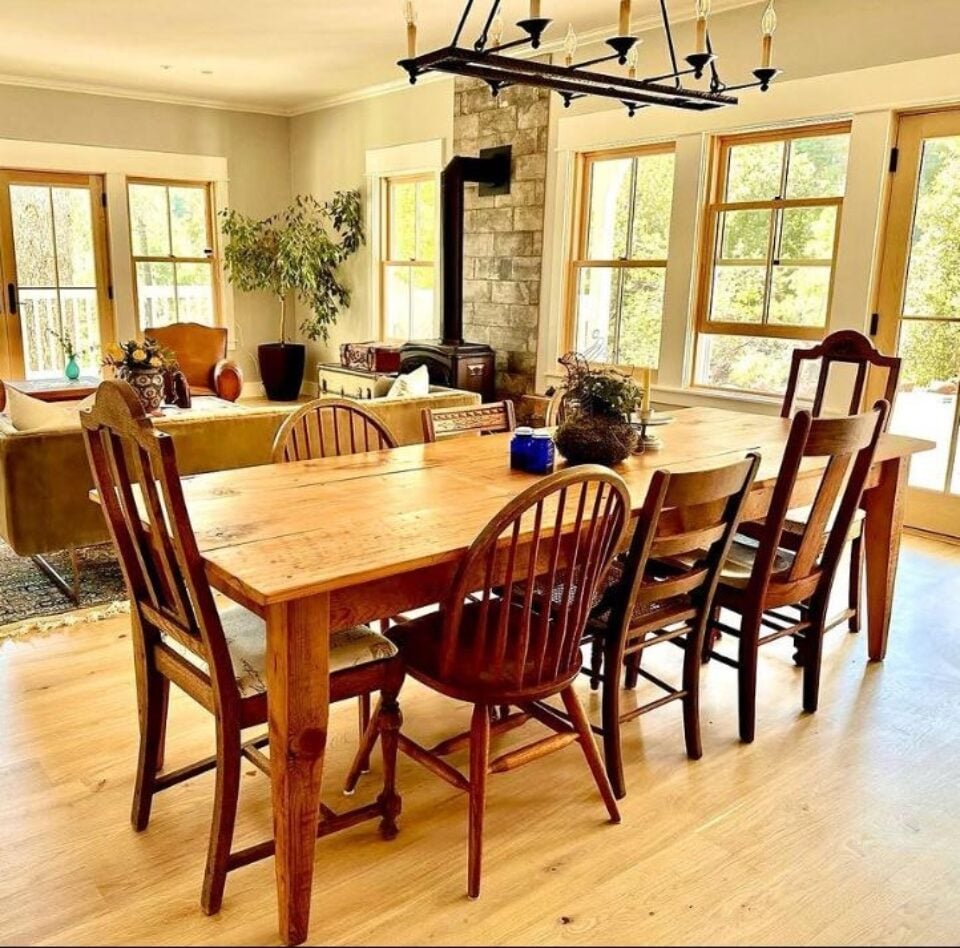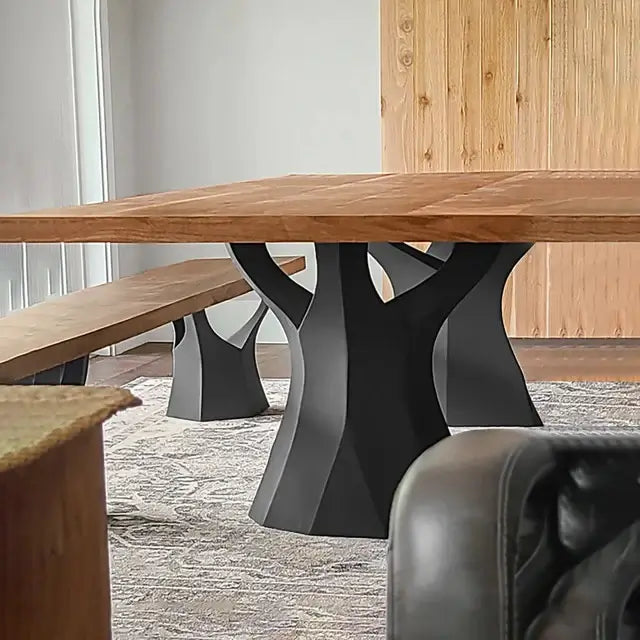Include Stamina and Appeal Utilizing Solid Dining Table Legs Wood Pieces
Include Stamina and Appeal Utilizing Solid Dining Table Legs Wood Pieces
Blog Article
Discovering the Various Sorts Of Eating Table Legs Wood for Your Eating Room
The option of dining table legs timber can profoundly affect both the functional and aesthetic high qualities of your dining area. Solid timber choices, such as oak and walnut, provide a traditional look with unmatched toughness, while engineered timber options use innovative styles that mimic the splendor of natural grains. In addition, the expanding fad of reclaimed timber introduces a sustainable element that attract environmentally mindful consumers. As we discover these numerous alternatives, it comes to be vital to think about not only the visual appeal yet additionally the sensible ramifications of each product choice. What elements should guide your choice?
Strong Wood Options

Unlike engineered products, strong wood is much less vulnerable to bending and damages over time when properly preserved. Each item of strong wood is unique, showcasing individual attributes that include to the appeal and character of the dining table.
Additionally, strong wood can be finished in countless methods, ranging from natural oils to stained coatings, allowing homeowners to customize their furniture to match their style. In recap, selecting strong timber for eating table legs not only ensures architectural integrity yet also improves the aesthetic allure of the dining location, making it a beneficial financial investment for any type of home.
Engineered Wood Alternatives

Plywood, built from several layers of timber veneer, is stable and specifically solid, making it a superb selection for dining table legs. Its layered structure enables it to withstand changes in humidity and temperature far better than conventional strong timber. MDF, on the various other hand, supplies a smooth surface for painting or veneering, enabling designers to attain a refined look while preserving structural integrity.
When selecting engineered wood options, it is vital to think about the designated usage and desired aesthetic. These materials not just boost the performance of eating rooms but also enable for better style versatility, making certain that typical and contemporary designs can coexist sympathetically.
Reclaimed Timber Includes
Recovered timber provides a distinct blend of sustainability and personality, making it an increasingly prominent choice for dining table legs. Sourced from old barns, factories, and other frameworks, redeemed wood embodies a background that new products simply can not duplicate. Each piece brings its own story, marked by unique imperfections, knots, and differing grain patterns, which add to a table's distinct visual appeal.
Along with its aesthetic appeal, recovered wood is an eco-friendly choice. By repurposing previously used products, it reduces the need for brand-new lumber, therefore assisting to preserve forests and decrease waste. This aligns with an expanding consumer choice for sustainable methods in furnishings.
Furthermore, reclaimed timber is typically more long lasting than recently collected timber as a result of its age. The all-natural drying out process that reclaimed timber goes through outcomes in a denser and more powerful material, making it less susceptible to warping and splitting. This enhances the longevity of dining tables, allowing them to withstand the rigors of day-to-day usage.
Softwood vs. Hardwood
When selecting eating table legs, recognizing the differences between softwood and wood is critical for accomplishing both visual and useful objectives. They normally exhibit a more rustic look, making them appropriate for casual or country-style dining areas.
On the other hand, woods, sourced from deciduous trees like maple, oak, and cherry, are renowned for their thickness, stamina, and toughness. The intricate grain patterns and rich hues of woods supply a sophisticated and classic appeal, making them perfect for official dining setups. While woods tend to be extra expensive and heavier, their durability versus damage usually justifies the investment.
Ultimately, the option between softwood and hardwood for dining table legs should line up with your style vision, use demands, and spending plan, ensuring that your eating area shows your individual style while continuing to be useful in time.

Treatments and surfaces
The aesthetic charm and durability of table legs can be considerably enhanced via various coatings and therapies. These processes not only safeguard the timber from damages yet likewise boost its look, enabling it to match varied interior designs.
One usual treatment is tarnishing, which passes through the wood and boosts its natural grain while including color. Spots supply an abundant, classy appearance, allowing house owners to match their furnishings with existing decor. Conversely, clear surfaces such as polyurethane or article source varnish produce a protective layer without changing the wood's original tone, guaranteeing longevity versus damage.
Additionally, all-natural oils, like tung or linseed oil, nurture the wood and provide a refined sheen, all while being green. These oils permit the surface to breathe, stopping wetness build-up and possible warping.
For those seeking a rustic beauty, weathered or distressed coatings can be put on create an aged look, including character to the item. Ultimately, the choice of coatings and treatments depends on personal preference, wanted appearances, and the visit here specific wood kind, making it important to think about these elements when choosing table legs for your room.
Final Thought
Strong timbers, crafted choices, and redeemed options each offer distinctive advantages, catering to various preferences and demands. Ultimately, the option of wood type must line up with wanted style, durability, and ecological factors to consider, enhancing the general eating experience.
The option of dining table legs timber can exceptionally impact both the useful and visual high qualities of your dining space - Dining Table Legs Wood. Strong timber alternatives, such as oak and walnut, supply a timeless look with unmatched resilience, while engineered timber options use cutting-edge designs that resemble the splendor of all-natural grains. Strong wood provides an ageless top quality that can elevate the general layout of an eating space. Each item of strong wood is look at this web-site distinct, showcasing specific features that add to the beauty and personality of the eating table
In addition, redeemed timber is frequently more resilient than freshly harvested wood due to its age.
Report this page